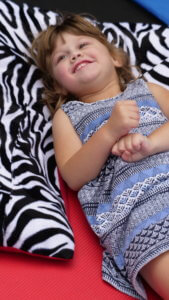How to Massage Your Child With Cerebral Palsy?
Massage can be wonderfully helpful for children with Cerebral Palsy.
Massage offers a lovely opportunity for bonding. Gentle, relaxing touch is a great non-verbal way to communicate tenderness and care, and build the connection between child and caregiver. It promotes secure attachment, releases feel-good hormones and helps our child feel loved and cherished.
If your child has tight muscles or increased tone, it is also a great way to gently stretch muscles and increase joint mobility, improve body awareness and give sensory input to those areas that don’t get to feel the world as they should. It can also help with constipation and circulation.
The idea of learning to massage can be daunting, but there is lots of great information out there to help us get started. We’ve put together our favourite videos on how to massage your child.
As well as a huge range of physical benefits (see below), massage can also support our child emotionally.
Gentle, relaxing touch is a great non-verbal way to communicate tenderness and care, and build the connection between child and caregiver. It promotes secure attachment, releases feel-good hormones and helps our child feel loved and cherished.
If our child struggles with sleep, a massage before bed can be really helpful. Adding in other relaxing elements (soft music, calming essential oils, sensory lights) enhances the experience.
The idea of learning to massage can be daunting, but there is lots of great information out there to help us get started – including the helpful videos we’ve shared below.

Gentle, relaxing touch is a lovely non-verbal way to communicate tenderness and care, and build the connection between child and caregiver. Giving our child a massage promotes secure attachment, releases feel-good hormones and helps our child feel loved and cherished.
Massage relaxes tight muscles and other soft tissues. This may lead to better joint ranges of movement and thus improve movement skills.
Massage wakes up our children’s muscles and allows them the opportunity to move better. Children who have some difficulties with movement and coordination, or who use wheelchairs, often don’t get sensory input (touch or physical contact) to all areas of their bodies. When parts of our bodies get less stimulation, the feedback to the brain is less – so they move less effectively. Massaging the hands or legs is therefore a great thing to do before playing or working on gross motor skills/movements.
Children who aren’t moving so much can have issues with circulation. Massage helps, because contracting underused muscles helps blood and other fluids move around the body. We always work towards the heart when we massage to help this process.
Massage that includes movement of legs and hips and gentle manipulation of the tummy can help move stomach contents, reducing trapped wind and constipation.
Massage provides firm touch and stimulates the proprioceptive system. These, together with rhythmic and predictable movements, are helpful both for calming or preparing for a challenging situation. Slow pressure movements can help our child to regulate their breathing and heart rate without being asked to do this consciously.
If our child struggles with sleep, a massage before bed can be really helpful. Adding in other relaxing elements (soft music, calming essential oils, sensory lights) enhances the experience.
This video series by KidCare Canada offers a great introduction to massage, with advice on techniques. While the focus is for babies up to 6 months of age, the principles apply for all ages – particularly if your child is not moving very much or struggles to reach gross motor milestones.
This 45 minute video takes you through a whole-body massage series with explanations of different techniques. Again, the video was created with babies in mind but the massage offered would still benefit older children.
If your child is receptive and calm you might be able to give them the entire massage while you follow along the video. However if you can only offer massage in small sections – even one leg or arm at a time – they will still feel the benefit.
If your child is older do feel free to pause the video to make sure you have time to cover the whole body in your massage -going slowly is more beneficial than rushing to keep up.
Singing is a nice addition to the massage series. If you do the massage regularly the songs will offer an aural cue as to what is coming/what to expect which can be comforting. However it is by no means essential: if your child does not like singing, you don’t have to sing. If the songs themselves are a problem you can switch to their favourites or something more age appropriate.
This is a really lovely video of a mother massaging her older child with Cerebral Palsy (Spastic Diplegia). It shows some great techniques on the legs and back and explains some of the benefits.
Here an Occupational Therapist shares a quick and simple calming massage series. It’s great for children who are over-stimulated or excited, and very helpful before bed or when they need to concentrate.
This video demonstrates hand and lower arm massage techniques. This can be lovely with children with tight hands or with floppy hands. If hands are tight, be careful to stretch slowly as you massage and keep looking in your child’s face to make sure you aren’t causing any discomfort.






